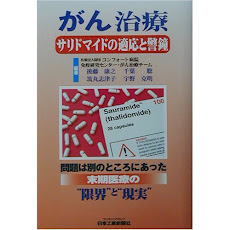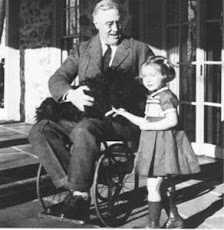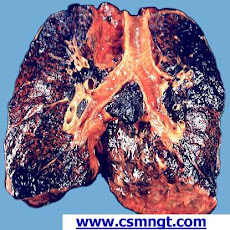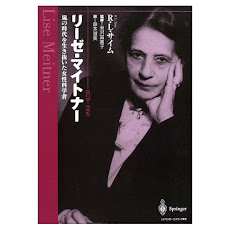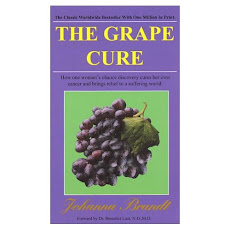数年前に中国の四川省特産「花椒」の温湯エキス (花水) が「PAK」遮断によって、(少なくとも動物実験で)抗癌作用を発揮することを、欧米の医学雑誌に発表した(1)。
http://homepage2.nifty.com/daikon_tom/nfj/2005_08_sansho.htm
しかしながら、その製品化(市販) が最近まで進んでいなかった。その理由の1つは、45度前後の温湯で抽出しても、室温に冷ますと、有効成分「ペッパリン」が沈殿してしまう、という欠点である。この沈殿は70%のアルコールに溶かすことができるが、このアルコールを最終的に蒸発させない限り、経口には適さないというディレンマがあった。さもなければ、癌やNF/TSC腫瘍などがせっかく治っても、患者が今後は「アル中」に悩み始める羽目に陥るからだ。。。
さて、最近になって、このディレンマを解決する方法が1つ見つかった! ガンマーCD(シクロデキストリン) という (安価で人畜無害な) 天然の環状オリゴ糖を利用して、この分子内部に疎水性の「抗癌成分」を包接して、均一かつ安定な分散溶液を作れば、エキス独特の苦味が消えるばかりではなく、腸管からの吸収がずっと高まるので、薬効も増強されるという利点がある。そこで、市販前に、家庭で簡単にできる「花水」のCD包接(調理)法を、下記に紹介しよう。
予め準備すべき材料:
花椒(粉末ではなく、果皮のまま).................. 20 g**
温湯 (45度前後)............................ 200cc(ml)
ガンマーCD (シクロデキストリン) 粉末 ........... 20ー30 g*
(細かい目の)大型の茶漉し
鍋 と魔法瓶とミキサー
温度計
**「花椒」の入手先は様々あるが、良質で安価なのは、下記の通販ネット:
http://item.rakuten.co.jp/hanshoya/japanesepepper300g/
300グラムがわずか600円前後である。
レサピ (調理法):
まず、鍋の中で、花椒を水道水に数分間浸した後、鍋をとろ火で加熱し、水温が50度前後になったら、
全体を魔法瓶に移し、一時間ほど時々(5ー10分毎に)振盪しながら、抽出を続ける。
その後、全体を (細かい目の)茶漉しで濾過 (あるいは布漉し) して、(紅茶のように赤っぽい) エキスを
ミキサーに受ける。 次に、ミキサーをゆっくり回転させながら、ガンマーCDを徐々に溶かし込んだ後、
蓋をして、5ー10間トップスピードで、回転する。
室温放置で、赤っぽい沈澱物が出ず、安定した均一の分散溶液ができれば、包接に成功!
*30 g のCDで、「苦い」エキスが「甘く」なる!
この乳濁液(包接エキス)を 3分して、毎日飲んで、3か間で消費する。保存は冷蔵庫で。 経口前に、体温近くに温め、
CDを良く溶かしてから飲むと、効き目がよい。 なお、茶漉しに残った「出し殻」は捨てる。
注意事項:
包接に使うCDは、純粋なガンマーCDでなくてはならない。一般に市販されている「CDの混合物」 (アルファー、ベータ、ガンマー) は、ガンマーCDの含量が少な過ぎて、実用にならない。 製造元は、シクロケムなど。 ガンマーCDの注文は、斎藤貿易(大阪) に直接、お願いします。個人宛に小売りするそうですから: saitouboueki@saitouboueki.com
定価は、キロ当たり7ー8千円のはず。
参考文献:
1。Hirokawa, Y., Nheu, T., Grimm, K., Mautner, V. et al. Sichuan Pepper Extracts Block
the PAK1/Cyclin D1 Pathway and the Growth of NF1-deficient Cancer Xenograft in Mice.
Cancer Biol. Ther., 2006: 5: 305-9.
2011年2月28日月曜日
2011年2月18日金曜日
Making the Legendary NZ Propolis "CAPE 60":
Blending Bio 30 with a Natural CAPE from API
CAPE (caffeic acid phenethyl ester) is the major anti-cancer polyphenol in propolis produced in Far East, Europe and Oceania. CAPE is now known to block the oncogenic kinase "PAK1" which is essential for the growth of more than 70 % of all human cancers (the majority of solid malignant tumors) , as well as brain tumors such as glioma, NF and TSC tumors. In addition, CAPE activates the tumor suppressing kinase "AMPK", and would be useful for the therapy of Diabetes (type 2) and for the "longevity" (a long life in good health) as well.
According to a 2002 poster on website, NZ propolis shows the highest CAPE content, 60-70 mg/g of dried propolis extract. That is the main reason why I got interested in NZ propolis extracts such as "Bio 30" from Manuka Health. However, in reality we have never seen such a CAPE-rich propolis among NZ propolis as yet. So far the Bio 30 batch that we got during 2006 would be the richest in CAPE, containing 12 mg of CAPE/g. We don't know the precise reason why we could not find the legendary CAPE-rich propolis called "CAPE 60" (containing over 60 mg/g).
Nevertheless, we could create the CAPE 60 artificially, by adding either synthetic or natural CAPE to any propolis. That is what we did during our 2006 in vivo (animal) test, proving that CAPE 60 is more effective than Bio 30 alone in suppressing the growth and metastasis of human NF1 and NF2 tumor xenografts in mice. However, we cannot add "synthetic" CAPE to propolis for medical purposes or human consumption, because the CAPE is not approved by FDA for clinical application. However, if the CAPE sources are among natural products such as propolis or enzymatically synthesized CAPE, there would be no problem for medical use.
Around 2006, a clever Taiwanese student (Chie-Hao Yeh, 23) developed the enzymatic way (esterification) to synthesize CAPE, in collaboration with Dr. Arief Widjaja, an Indonesian senior chemist(1). His thesis is entitled: Enzymatic Synthesis of CAPE. He used an immobilized "lipase B" (Novozym 435) from a fungus called Candida antarctica. The starting materials are CA (caffeic acid) and 2-phenylethanol. According to his recipe, this enzyme catalyzes the esterification of these two natural compounds in isooctane at 70oC for 48 hrs with almost 100% yield! This enzyme is resistant to both heat and organic solvent. After the reaction is completed, only two things remain in solution: CAPE and the solvent. Isooctane could be easily removed by evaporation, leaving basically only CAPE behind (2). Around 2010, a Japanese bee product company called “API” developed a natural source which produces CAPE enzymatically. Although the precise nature of this natural source still remains unknown in public (unpublished), it was filed as a patent.
Originally this company intended to commercialize a Chinese red propolis extract (RPE), because it contains more CAPE than Bio 30 or any other propolis products on the market, around 17 mg/g. Unfortunately, however, they found pesticides as contaminants in this RPE, and abandoned this RPE project. Instead, they developed a natural way to produce CAPE, to create a CAPE-rich propolis by blending this natural source with any “clean” (pesticide-free) propolis such as Bio 30. Thus, I recently contacted the director of API research center, discussing the possibility of commercializing the legendary “CAPE 60” by blending Bio 30 with their natural CAPE source, perhaps under the brand name “Api-Polis”, for the therapy of NF/TSC/cancers. Furthermore, by encapsulating this CAPE-rich propolis in gamma CD (cyclodextrin), a natural ring oligo sugar, we would be able to create a highly “bioavailable” (effectively absorbed through gastrointestinal membranes) CD complex of the CAPE-rich propolis, the “Holy Grail” of api-therapy.
References:
1. Widjaja, A. et al. Enzymatic synthesis of caffeic acid phenethyl ester. J.
Chinese Inst. Chem. Engin. 2008, 39, 413-418
2. Chen, HC., et al. Optimized enzymatic synthesis of CAPE by RSM. New Biotech,
2010, 27, 89-93.
According to a 2002 poster on website, NZ propolis shows the highest CAPE content, 60-70 mg/g of dried propolis extract. That is the main reason why I got interested in NZ propolis extracts such as "Bio 30" from Manuka Health. However, in reality we have never seen such a CAPE-rich propolis among NZ propolis as yet. So far the Bio 30 batch that we got during 2006 would be the richest in CAPE, containing 12 mg of CAPE/g. We don't know the precise reason why we could not find the legendary CAPE-rich propolis called "CAPE 60" (containing over 60 mg/g).
Nevertheless, we could create the CAPE 60 artificially, by adding either synthetic or natural CAPE to any propolis. That is what we did during our 2006 in vivo (animal) test, proving that CAPE 60 is more effective than Bio 30 alone in suppressing the growth and metastasis of human NF1 and NF2 tumor xenografts in mice. However, we cannot add "synthetic" CAPE to propolis for medical purposes or human consumption, because the CAPE is not approved by FDA for clinical application. However, if the CAPE sources are among natural products such as propolis or enzymatically synthesized CAPE, there would be no problem for medical use.
Around 2006, a clever Taiwanese student (Chie-Hao Yeh, 23) developed the enzymatic way (esterification) to synthesize CAPE, in collaboration with Dr. Arief Widjaja, an Indonesian senior chemist(1). His thesis is entitled: Enzymatic Synthesis of CAPE. He used an immobilized "lipase B" (Novozym 435) from a fungus called Candida antarctica. The starting materials are CA (caffeic acid) and 2-phenylethanol. According to his recipe, this enzyme catalyzes the esterification of these two natural compounds in isooctane at 70oC for 48 hrs with almost 100% yield! This enzyme is resistant to both heat and organic solvent. After the reaction is completed, only two things remain in solution: CAPE and the solvent. Isooctane could be easily removed by evaporation, leaving basically only CAPE behind (2). Around 2010, a Japanese bee product company called “API” developed a natural source which produces CAPE enzymatically. Although the precise nature of this natural source still remains unknown in public (unpublished), it was filed as a patent.
Originally this company intended to commercialize a Chinese red propolis extract (RPE), because it contains more CAPE than Bio 30 or any other propolis products on the market, around 17 mg/g. Unfortunately, however, they found pesticides as contaminants in this RPE, and abandoned this RPE project. Instead, they developed a natural way to produce CAPE, to create a CAPE-rich propolis by blending this natural source with any “clean” (pesticide-free) propolis such as Bio 30. Thus, I recently contacted the director of API research center, discussing the possibility of commercializing the legendary “CAPE 60” by blending Bio 30 with their natural CAPE source, perhaps under the brand name “Api-Polis”, for the therapy of NF/TSC/cancers. Furthermore, by encapsulating this CAPE-rich propolis in gamma CD (cyclodextrin), a natural ring oligo sugar, we would be able to create a highly “bioavailable” (effectively absorbed through gastrointestinal membranes) CD complex of the CAPE-rich propolis, the “Holy Grail” of api-therapy.
References:
1. Widjaja, A. et al. Enzymatic synthesis of caffeic acid phenethyl ester. J.
Chinese Inst. Chem. Engin. 2008, 39, 413-418
2. Chen, HC., et al. Optimized enzymatic synthesis of CAPE by RSM. New Biotech,
2010, 27, 89-93.
2011年2月10日木曜日
「プロポリス」は、副作用のない「癲癇 (てんかん) 薬」!
癲癇の原因である発癌キナーゼ「TOR」を二重に遮断。
癲癇(てんかん)発作に悩む患者の数は、人口の1% 近いといわれている。
しかしながら、市販されている癲癇治療薬はどれも副作用がかなり強いと
いわれている。しかも、市販の癲癇薬では直り難い強情な癲癇もある。。。
さて、難病「癲癇」に関して、2008年に大変画期的な発見がなされた。米国
セントルイスにあるワシントン大学のマイク・ウオングのグループによれば、
発癌キナーゼ「TOR」の阻害剤である「ラパマイシン」は、TSC腫瘍の増殖を
抑えるばかりではなく、TSCにしばしば合併して起こる癲癇の症状を抑える
作用もある (総説 1)。 つまり、癲癇が発生する原因の1つは、「TOR」の
異常な活性化にあることが示唆される。前述したが、「TOR」の活性化には
「PAK」が必須であることが既にわかっている。従って、「PAK」を遮断すれば、
癲癇が治まるはずである。「PAK」を遮断するプロポリスが癲癇に効くのは、
当然のことである。
さらに、CAPEを含むプロポリス (例えば、 「Bio 30」など)には、抗癌
キナーゼ「AMPK」を活性化する作用もある。「AMPK」が活性化すると、
下流の「TOR」が遮断される。つまり、「Bio 30」は、言わば「ダブル
パンチ」で、癲癇の原因である「TOR」を遮断しているわけである。
従って、市販されている従来の癲癇治療薬が効かない癲癇患者には、安価かつ
安全な「プロポリス」を経口するよう、ぜひお勧めしたい。
さて、スイスの「ノバルティス」製薬が開発したラパマイシン誘導体「アフィニトル」が
最近、日本でも市販され、TSCなどに伴う腎臓腫瘍の増殖を抑えると
いわれているが、一日当たりの薬価(10 mg 錠剤) が、なんと2ー3万円も
する。しかも、免疫機能を抑え、血圧を上げるという副作用がある。
「Bio 30」なら、一日の薬価 (体重10 kg当たり 1ml)は、わずか
100円前後で、かつ癲癇の発作や脳腫瘍の増殖もストップするという臨床例が、
既にある。しかも副作用がないから、安心して一生経口し続けることが可能で
ある。
総説
1。Wong, M. Mammalian Target of Rapamycin (mTOR) Inhibition as a Potential
Antiepileptogenic Therapy: From Tuberous Sclerosis to Common Acquired Epilepsies.
Epilepsia, 2010, 51, 27-36.
しかしながら、市販されている癲癇治療薬はどれも副作用がかなり強いと
いわれている。しかも、市販の癲癇薬では直り難い強情な癲癇もある。。。
さて、難病「癲癇」に関して、2008年に大変画期的な発見がなされた。米国
セントルイスにあるワシントン大学のマイク・ウオングのグループによれば、
発癌キナーゼ「TOR」の阻害剤である「ラパマイシン」は、TSC腫瘍の増殖を
抑えるばかりではなく、TSCにしばしば合併して起こる癲癇の症状を抑える
作用もある (総説 1)。 つまり、癲癇が発生する原因の1つは、「TOR」の
異常な活性化にあることが示唆される。前述したが、「TOR」の活性化には
「PAK」が必須であることが既にわかっている。従って、「PAK」を遮断すれば、
癲癇が治まるはずである。「PAK」を遮断するプロポリスが癲癇に効くのは、
当然のことである。
さらに、CAPEを含むプロポリス (例えば、 「Bio 30」など)には、抗癌
キナーゼ「AMPK」を活性化する作用もある。「AMPK」が活性化すると、
下流の「TOR」が遮断される。つまり、「Bio 30」は、言わば「ダブル
パンチ」で、癲癇の原因である「TOR」を遮断しているわけである。
従って、市販されている従来の癲癇治療薬が効かない癲癇患者には、安価かつ
安全な「プロポリス」を経口するよう、ぜひお勧めしたい。
さて、スイスの「ノバルティス」製薬が開発したラパマイシン誘導体「アフィニトル」が
最近、日本でも市販され、TSCなどに伴う腎臓腫瘍の増殖を抑えると
いわれているが、一日当たりの薬価(10 mg 錠剤) が、なんと2ー3万円も
する。しかも、免疫機能を抑え、血圧を上げるという副作用がある。
「Bio 30」なら、一日の薬価 (体重10 kg当たり 1ml)は、わずか
100円前後で、かつ癲癇の発作や脳腫瘍の増殖もストップするという臨床例が、
既にある。しかも副作用がないから、安心して一生経口し続けることが可能で
ある。
総説
1。Wong, M. Mammalian Target of Rapamycin (mTOR) Inhibition as a Potential
Antiepileptogenic Therapy: From Tuberous Sclerosis to Common Acquired Epilepsies.
Epilepsia, 2010, 51, 27-36.
登録:
コメント (Atom)










































































![リオ五輪男子体操団体:日本(金)、ロシア[銀]、中国[銅]。](https://blogger.googleusercontent.com/img/b/R29vZ2xl/AVvXsEjHS61FORcH43CteZVfJzLmbqvNwOIliOSMpTpRtEi7x8j1ZwPk5rDaZovTrwuZxfDDtdEDSj673it735LF0mweIunaj7ja07lURBDYTV6wPMaAlumFt3aWWzYbHZgIaxcOLk_OKEMyQ3lX/s1600/2016+taiso+gold.jpg)
![皇太子(明仁)による沖縄訪問 [1975年]](https://blogger.googleusercontent.com/img/b/R29vZ2xl/AVvXsEjvSQrzV7yw_4gVQSwxZP_jh4VnEJscSqOqbiBh0VdAK3CRddXRqkd70JdLyws9fGejk-FGVmXWbHvSxlF3f8UogTyf9KXbqU1NGXesvcx2Hlsd6uq81AHweeioc61wynq3d2IYuyolijgT/s1600/akihito+message.jpg)









































































































































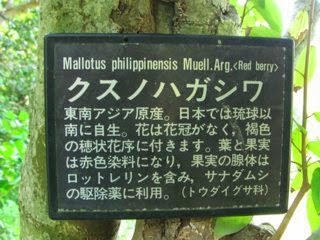








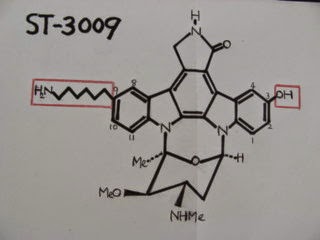







































![アルニカ [ウサギ菊]](https://blogger.googleusercontent.com/img/b/R29vZ2xl/AVvXsEilqv0qou-4NpoUh1PFWYK0FSaozKazee0VYGxsFtfjBma46ya9yxqB6X9Ziuob25tNRpBbnFIcUFlOEjz1WcAjVNzjGl1E-QbDgE7VOLkjZDx0eplJ1WJHf0fTEWXxf8F5G-cHUhqHELY9/s1600/ArnicaS.jpg)


















































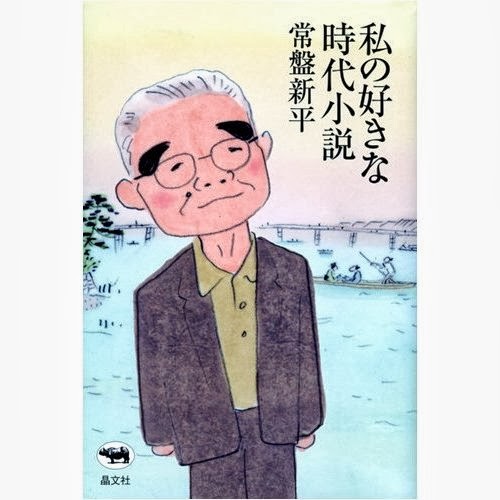





















































































.jpg)
















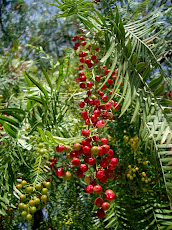















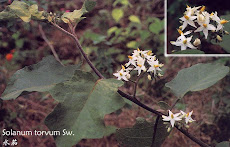







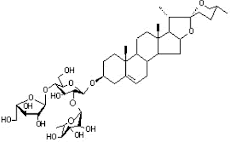
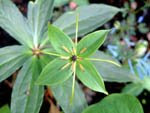














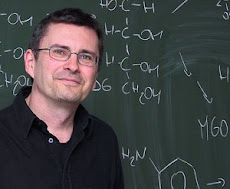


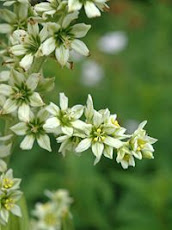





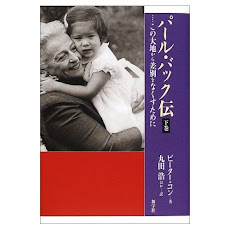






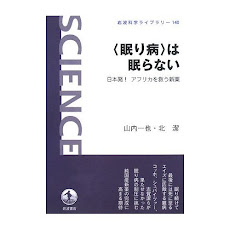












.jpg)





